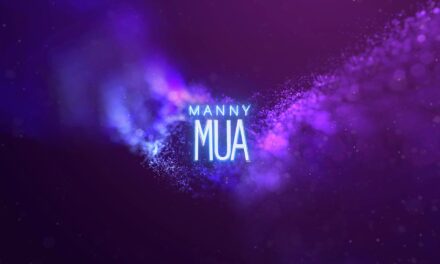You’ve secured a sponsorship deal, and now the brand has sent you a pages-long contract to review and sign. Plenty of content creators might be so excited to get an offer that they skim the fine print and sign on the dotted line. But the particulars spelled out in all those pages can significantly impact your brand, image, and content business. (And in most cases, those contract details can be negotiated if you don’t agree.)
Here are six of those contract details you need to know – and understand – before you sign anything.
1. Usage rights
Usage rights dictate how a brand can use the content you create for them, says Jess Hunichen, co-founder of Shine Talent Group. “This is something to be really careful with in terms of the specifics around usage.”
It likely will detail how long can brand can use your content, but pay attention to the other details. Do they have the right to reuse your creation? How so? Can they edit or alter whatever you created? In some cases, brands might change the color treatment on the image. Or they might put new copy over the image, changing the context of what the post was originally about.
“It’s totally within your power to go back and say, ‘Yes, you can have usage rights, but no, you can’t later alter the content,’” Jess says.
It's totally within your power to adjust your #sponsorship contract to say the brand can have usage rights but can't alter the content, says @Jess_Hunichen. #CreatorEconomy #ContentEntrepreneur Share on XCaveat: If anything says “in perpetuity,” that’s a red flag. “What that means is they can use your content forever, which, honestly, they aren’t going to,” Jess says. “Content is outdated so quickly. There’s just, in my opinion, no need for contracts to have in perpetuity. It’s just not relevant.”
2. Payment terms
Compensation, deliverables, and publication timing are, of course, the key points to any contract, Jess says. But some creators don’t pay attention to the timing of their payment.
“The brand or agency will send over a contract, and the rate is there, and the deliverables are there,” she says. “And they’ve put in their payment terms of 120 days, and sometimes it’s 120 days from the end of the contract term.”
For example, a creator and brand publish a campaign that runs Jan. 2 to Jan. 31. With 120-day end-of-contract terms, the brand has until the end of May to pay the creator. Waiting so long for a payday can be especially difficult for smaller content entrepreneurs with little cash flow.
Jess typically pushes for creators to get paid 30 days after the first post. If it’s a larger campaign with a series of posts over, for example, six months, Jess usually negotiates for her clients to receive 50% of the total payment upon signing the contract. “We do it all the time,” she says.
Pay attention to the payment terms in your brand sponsorship contracts. @Jess_Hunichen pushes for creators to get paid 30 days after the first post. #CreatorEconomy #SponsoredContent Share on X3. Whitelisting
Whitelisting sometimes falls under usage, boosting, or ad budget terms, Jess says. It involves how the brand can push your content to others.
For example, if you produce a piece of content for Nike, your contract should spell out how often they can share that sponsored content to the same audience. That frequency matters, Jess says, because if it’s too often, consumers will see a strong brand connection between you and Nike. That could affect your ability to line up other sponsors in the future.
“With ad buys, you can put in every rule under the sun,” Jess says. Creators can insist, for example, that they don’t want the content pushed to their existing audience or that the same people won’t see the same content more than three times over two weeks.
“Do not be afraid to negotiate,” she says. “Brands will try to push to you that its exposure for you and more people will see your content and you’re going to get higher engagement. It’s just not the case. It can be detrimental to your brand as a creator if people see you over and over and over again, pushing the same product.”
4. Exclusivity
Exclusivity (also called non-compete clauses) limits with whom the creators can do business and for how long after a partnership ends. Companies don’t want a creator pushing their products at the same time as a competitor’s. Brands should pay a premium for this access to a creator.
But not every industry is created equal. As Jess works with her clients, she approaches exclusivity from this angle: How often would a consumer actually use a product or service? Most individuals only have one car, but people typically own multiple brands of toys, makeup, or shoes.
“To me, exclusivity in the auto category is lower priority than exclusivity in beauty or fashion or toys,” she says. “I would want a much higher exclusivity fee for a product that’s heavily saturated.”
5. Required impressions
Some brands attempt to trigger payments based on the number of impressions the content receives. If the creator doesn’t hit the target, they aren’t paid.
“Be wary,” Jess advises. You have no control over the algorithms that push your content on TikTok. And there’s nothing you can do if Instagram experiences an outage on the day the campaign launches.
If a brand specifies the minimum number of views or impressions to trigger payment, charge a higher rate and insist on a bonus if the content exceeds it. “If I’m not getting paid if I don’t hit [a minimum], then I should be paid extra if I well exceed it,” she says.
If a brand requires a minimum number of impressions to trigger payment, charge a higher rate and insist on a bonus for exceeding it, advises @Jess_Hunichen. #ContentBusiness #CreatorEconomy Share on X6. Little contract details
The fine print in any contract can cover multiple requirements. Jess recommends creators also be on the lookout for these details:
Going dark
Jess has seen brands attempt to slip into a contract that a creator can’t post any other content around the time their campaign goes live. So, for example, the creator must go dark for 12 hours before the sponsored content appears and 12 hours after it launches. “We always push back on anything like that,” she says.
Every creator is different, but some post 100 stories a day, and their audience might worry if they suddenly went silent. “That would be very off-brand and out of character for that talent,” she says.
Visible logos
Some brands insist that no other brand logo is visible in the final deliverable – not even a tiny logo on a pair of leggings or in a kitchen appliance in the background. Before creating any content, creators can save themselves a lot of time by understanding what’s expected. “It’s more just trying to avoid a reshoot,” Jess says. “This is why you have to read your contracts very, very well because things like this will be added into them.”
Be prepared to negotiate
Bottom line, Jess says, as you’re fielding offers from brands, never be afraid to negotiate.
Never be afraid to negotiate offers you field from brands, says @Jess_Hunichen. #CreatorEconomy #ContentEntrepreneur Share on X“Just because there is a brand offering you a contract, and it can be really intimidating when it’s a big brand, [remember that] you have something they want,” she says. “Know that and use it to your advantage.”
About the author
Sarah Lindenfeld Hall is a longtime journalist, freelance writer, and founding editor of two popular parenting websites in North Carolina. She frequently writes about parenting, aging, education, business management, and interesting people doing remarkable things.











